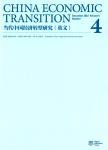Economic Development in the Guangdong-Hong Kong-Macao Greater Bay Area:Spatial Pattern,Influencing Factors,and implications-Based on the Hierarchical Data of Two-Layer Administrative Regions
作者机构:School of Financial Mathematics&StatisticsGuangdong University of FinanceGuangzhou 510521China Huashang CollegeGuangdong University of Finance&EconomicsGuangzhou 511300China School of Mathematics and StatisticsGuangdong University of Foreign StudiesGuangzhou 510006China
出 版 物:《China Economic Transition》 (当代中国经济转型研究(英文版))
年 卷 期:2023年第6卷第3期
页 面:287-316页
学科分类:0202[经济学-应用经济学] 02[经济学] 020205[经济学-产业经济学]
基 金:the key project of National Social Science Foundation of China"Research on Statistical Measurement and Decision Support System of the Coordinated Development Mechanism System ofthe Guangdong-Hong Kong-Macao Greater Bay Area"(No.19ATJ004) the project of Guangdong Natural Science Foundation"Stochastic Frontier Models from the Endogeneity Perspective:Estimation,Testing and Application"(No.2019A1515110267) the Guangdong Provincial Humanities and Social Sciences Innovation Team Project(No.2020WCXTD008)
主 题:Guangdong-Hong Kong-Macao Greater Bay Area economic development spatial pattern influencing factor hierarchical data
摘 要:This paper investigates the economic development within the Guangdong-Hong Kong-Macao Greater Bay Area from two perspectives-spatial pattern and influencing factors-to promote coordinated development across the *** paper employs Moran s I test and local Getis-Ord G statistic from spatial ***,it constructs a hierarchical spatial econometric model to facilitate empirical *** is found that the overall economic development of the Guangdong-Hong Kong-Macao Greater Bay Area exhibits amountainshapedspatial lpattern of the high-level homogeneous regions withhhighhigh correlationand the lowlevel homogeneous regions withlow-low correlation.The internal difference in economic density is moderate,with an obvious trend of decrease year by *** density shows a significant spatial positive correlation,with the expansion of the scopeof areas exhibitinghigh-high correlation.The differences in economic density between hotspots and sub-hotspots have decreased,but the economic density of cold spots has failed to keep up with the development of other *** difference in factor input density among the influencing factors explains most of the differences in economic density among different *** results from the R&D capital investment coefficient indicate that in recent years,the effect of investments in urban scientific and tetechnological innovation factors has been more extensive and uniform among the regions under its jurisdiction,but the spatial spillover effect of innovation factors at both layers is not significantly *** from the city s location within the Greater Bay Area,the relative location of the jurisdictions within the city equally influences the economic development configuration of the Greater Bay *** economic density in regions adjacent to cities outside the Greater Bay Area is notably lower than in other regions,their growth rate and production efficiency remain on par with other regi



